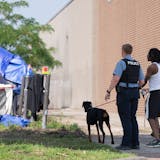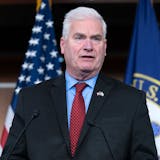Why here? Why now?
Those questions have simmered in plenty of Minnesota minds, I'd guess, ever since the sorry Memorial Day evening when four Minneapolis cops made this state the flash point for globe-spanning outrage over racial injustice.
Why did that happen here, at the wellspring of Hubert Humphrey progressivism? Why did this spark catch fire now, more than 50 years after this state last watched an urban commercial district go up in flames during race-related unrest?
Those are the kind of questions that send an erstwhile columnist to the state demographer. Demography can't explain everything. But it usually reveals things worth knowing, I've found, especially when big questions about society start with "why." Or when thoughts turn, as they now must, to "what's next?"
For example, know this: While Minnesota remains "whiter" than many American states, it also has witnessed dramatic growth in the share of its population counted as people of color. While that growth has slowed somewhat since 2010, it hasn't stopped, and likely won't for many years to come.
"Minnesota's racial diversity has lately been increasing at about half a percentage point a year — and that's rapid for a society," state demographer Susan Brower told me last week.
Especially, I'd add, for a state in which people of color accounted for just 1.2% of the population in 1960, as the 20th-century U.S. civil rights movement gathered steam.
A big change for Minnesota came between 1990 and 2010, Brower said, when immigration brought waves of people born in Asia and Africa to the state. That took the share of Minnesotans of color from a little more than 6% in 1990 to nearly 17% in 2010.



